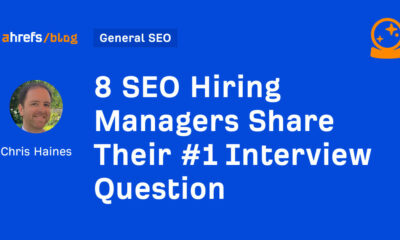MARKETING
How Product Managers Can Work With Customer Support

The quality of the customer experience is a determining factor of a successful business. 50% of consumers tend to switch to an alternative brand after one bad experience. Should there be an additional negative incident, this figure rises exponentially.
Add this to the higher cost of acquiring new customers compared to retaining the existing customer base, and one thing is exceedingly clear:
Customer experience is a key driver of business growth with the potential to make or break your business.
Benefits of working with customer support for product managers
Customer support is an integral aspect of a customer experience. It should, therefore, be a key concern for:
- eCommerce site owners
- New product managers
- Professionals in the product management field
If any of the above describes you, you should constantly work to make your business more customer-centric by refining the experience you deliver to customers. Think of consumer experiences from a holistic perspective, considering every step of the consumer journey from end to end.
Product managers, in particular, should strive to make exemplary service and customer support a reality. That’s because product management is the point of intersection between the business and the user.
Today we’ll explore some insights that can help you make your business more customer-centric and accrue benefits such as:
- Improved customer satisfaction
- Improved customer retention
- Higher chances of referrals
Rethink Customer Support
Before we can offer solutions, we must identify the problems that warrant them. And prior to establishing the problems, it’s imperative that we clearly identify who’s experiencing them.
That’s where many product managers, product teams, and customer support teams go wrong. They fail at adequately providing customer support due to their positioning.
Anyone within the company is susceptible to blind spots. Why? It’s simple — you have the advantage of an insider’s perspective, but your customer doesn’t.
This means that there’s a great deal that you may not be picking up on from the customer’s perspective. Find these missing puzzle pieces and gain a broader view of the bigger picture.
User Analytics
Regardless of its nature, every business needs to understand its consumers. User analytics allow you to clearly identify who your customers are at the most convenient point of contact.
Map out their entire customer journey with session replays, and gain unparalleled insight on when, where, and how users use your product.
Heatmaps & Screen Analytics
Heatmaps and screen analytics are crucial, as they enable you to pinpoint the user intent that’s motivating your customers. It’s essential to understand your customers’ user intent to provide them with precisely what they want and need.
Considering that most consumers expect businesses to have a deep understanding of their unique needs and expectations, this is especially important. Instead of resulting in a call for support, doing so minimizes the chances of customer issues occurring in the first place. In addition, the heatmaps and screen analytics contribute to the low bounce rate by giving you the data necessary to enhance your user experience.
Funnel Analytics
Funnel analytics are a powerful way to gauge customer experiences. They help you understand why users drop off and allow you to compare the experiences of customers who drop off with those who don’t. That way, you can identify bottlenecks, problem areas, and onboarding, activation, or conversion issues.
Join the Customer Support Front Lines
Another way you can improve customer support services is by immersing yourself in the day-to-day work of customer support representatives at your company.
As a product manager, you understand the product from the inside out. But, on the other hand, the support agents are well-equipped to offer technical support when a customer support interaction arises.
Spend some time working alongside the team and learn the responsibilities of a customer support representative. Work through their process, observe their approaches, and understand the challenges they encounter.

The outcome will be a more streamlined and unified approach when dealing with all customer-related matters.
Take a Deep Dive Into Customer Complaints
When customers experience issues, the customer service team is their first contact point. At this point, the only thing more frustrating than the issue at hand is an underwhelming response.
This is why you ought to look more closely into customer inquiries. What’s their nature? How long do customers typically have to wait for assistance? What issues keep recurring?
Collecting this information will significantly benefit you and the customer support team to improve communication on standard channels or process customer complaints.
For instance, over 50% of customers from different age groups typically reach out to customer support via phone. Working with your support agents on an efficient workflow for handling phone calls can help you resolve issues faster.
Adding a live chat support feature could also be something you want to consider. It makes accessing support from the customer service department easier while offering a personalized approach.
Digitize Your Tech Support
According to HubSpot, 90% of customers rate an “immediate” response as important or very important.
In many cases, however, there are various issues to address and a large number of customers to please. Therefore, delivering timely resolutions and fast customer support can be an uphill task for customer support agents.
For this reason, you should consider taking up support automation.
Support automation refers to building processes and systems that minimize the need for agent intervention/involvement in delivering service and support to customers.
This approach helps achieve the balance between minimizing pressure on customer service agents and delivering the best customer support and overall experience.
69% of customers prefer to resolve their issues on their own at first. And yet, less than a third of companies offer self-service options such as a knowledge base. So, make the most of digitization and build knowledge on user experiences and the issues they encounter.
Conclusively, you should enrich the support your customers receive by blending your experiences, those of the customer service team, and your strategy with technology.
Conclusion
As a product manager, there’s no shortage of issues to keep you on your feet all day and keep you up at night.
Thankfully, we live in a time where there are just as many solutions to help you and the tech support teams you work with along the way. Tweak processes to improve efficiency, solve problems more effectively, and, most importantly, provide excellent customer support.
Source link
MARKETING
YouTube Ad Specs, Sizes, and Examples [2024 Update]
![YouTube Ad Specs, Sizes, and Examples [2024 Update] YouTube Ad Specs, Sizes, and Examples](https://articles.entireweb.com/wp-content/uploads/2024/06/YouTube-Ad-Specs-Sizes-and-Examples.jpg)
Introduction
With billions of users each month, YouTube is the world’s second largest search engine and top website for video content. This makes it a great place for advertising. To succeed, advertisers need to follow the correct YouTube ad specifications. These rules help your ad reach more viewers, increasing the chance of gaining new customers and boosting brand awareness.
Types of YouTube Ads
Video Ads
- Description: These play before, during, or after a YouTube video on computers or mobile devices.
- Types:
- In-stream ads: Can be skippable or non-skippable.
- Bumper ads: Non-skippable, short ads that play before, during, or after a video.
Display Ads
- Description: These appear in different spots on YouTube and usually use text or static images.
- Note: YouTube does not support display image ads directly on its app, but these can be targeted to YouTube.com through Google Display Network (GDN).
Companion Banners
- Description: Appears to the right of the YouTube player on desktop.
- Requirement: Must be purchased alongside In-stream ads, Bumper ads, or In-feed ads.
In-feed Ads
- Description: Resemble videos with images, headlines, and text. They link to a public or unlisted YouTube video.
Outstream Ads
- Description: Mobile-only video ads that play outside of YouTube, on websites and apps within the Google video partner network.
Masthead Ads
- Description: Premium, high-visibility banner ads displayed at the top of the YouTube homepage for both desktop and mobile users.
YouTube Ad Specs by Type
Skippable In-stream Video Ads
- Placement: Before, during, or after a YouTube video.
- Resolution:
- Horizontal: 1920 x 1080px
- Vertical: 1080 x 1920px
- Square: 1080 x 1080px
- Aspect Ratio:
- Horizontal: 16:9
- Vertical: 9:16
- Square: 1:1
- Length:
- Awareness: 15-20 seconds
- Consideration: 2-3 minutes
- Action: 15-20 seconds
Non-skippable In-stream Video Ads
- Description: Must be watched completely before the main video.
- Length: 15 seconds (or 20 seconds in certain markets).
- Resolution:
- Horizontal: 1920 x 1080px
- Vertical: 1080 x 1920px
- Square: 1080 x 1080px
- Aspect Ratio:
- Horizontal: 16:9
- Vertical: 9:16
- Square: 1:1
Bumper Ads
- Length: Maximum 6 seconds.
- File Format: MP4, Quicktime, AVI, ASF, Windows Media, or MPEG.
- Resolution:
- Horizontal: 640 x 360px
- Vertical: 480 x 360px
In-feed Ads
- Description: Show alongside YouTube content, like search results or the Home feed.
- Resolution:
- Horizontal: 1920 x 1080px
- Vertical: 1080 x 1920px
- Square: 1080 x 1080px
- Aspect Ratio:
- Horizontal: 16:9
- Square: 1:1
- Length:
- Awareness: 15-20 seconds
- Consideration: 2-3 minutes
- Headline/Description:
- Headline: Up to 2 lines, 40 characters per line
- Description: Up to 2 lines, 35 characters per line
Display Ads
- Description: Static images or animated media that appear on YouTube next to video suggestions, in search results, or on the homepage.
- Image Size: 300×60 pixels.
- File Type: GIF, JPG, PNG.
- File Size: Max 150KB.
- Max Animation Length: 30 seconds.
Outstream Ads
- Description: Mobile-only video ads that appear on websites and apps within the Google video partner network, not on YouTube itself.
- Logo Specs:
- Square: 1:1 (200 x 200px).
- File Type: JPG, GIF, PNG.
- Max Size: 200KB.
Masthead Ads
- Description: High-visibility ads at the top of the YouTube homepage.
- Resolution: 1920 x 1080 or higher.
- File Type: JPG or PNG (without transparency).
Conclusion
YouTube offers a variety of ad formats to reach audiences effectively in 2024. Whether you want to build brand awareness, drive conversions, or target specific demographics, YouTube provides a dynamic platform for your advertising needs. Always follow Google’s advertising policies and the technical ad specs to ensure your ads perform their best. Ready to start using YouTube ads? Contact us today to get started!
MARKETING
Why We Are Always ‘Clicking to Buy’, According to Psychologists

Amazon pillows.
MARKETING
A deeper dive into data, personalization and Copilots

Salesforce launched a collection of new, generative AI-related products at Connections in Chicago this week. They included new Einstein Copilots for marketers and merchants and Einstein Personalization.
To better understand, not only the potential impact of the new products, but the evolving Salesforce architecture, we sat down with Bobby Jania, CMO, Marketing Cloud.
Dig deeper: Salesforce piles on the Einstein Copilots
Salesforce’s evolving architecture
It’s hard to deny that Salesforce likes coming up with new names for platforms and products (what happened to Customer 360?) and this can sometimes make the observer wonder if something is brand new, or old but with a brand new name. In particular, what exactly is Einstein 1 and how is it related to Salesforce Data Cloud?
“Data Cloud is built on the Einstein 1 platform,” Jania explained. “The Einstein 1 platform is our entire Salesforce platform and that includes products like Sales Cloud, Service Cloud — that it includes the original idea of Salesforce not just being in the cloud, but being multi-tenancy.”
Data Cloud — not an acquisition, of course — was built natively on that platform. It was the first product built on Hyperforce, Salesforce’s new cloud infrastructure architecture. “Since Data Cloud was on what we now call the Einstein 1 platform from Day One, it has always natively connected to, and been able to read anything in Sales Cloud, Service Cloud [and so on]. On top of that, we can now bring in, not only structured but unstructured data.”
That’s a significant progression from the position, several years ago, when Salesforce had stitched together a platform around various acquisitions (ExactTarget, for example) that didn’t necessarily talk to each other.
“At times, what we would do is have a kind of behind-the-scenes flow where data from one product could be moved into another product,” said Jania, “but in many of those cases the data would then be in both, whereas now the data is in Data Cloud. Tableau will run natively off Data Cloud; Commerce Cloud, Service Cloud, Marketing Cloud — they’re all going to the same operational customer profile.” They’re not copying the data from Data Cloud, Jania confirmed.
Another thing to know is tit’s possible for Salesforce customers to import their own datasets into Data Cloud. “We wanted to create a federated data model,” said Jania. “If you’re using Snowflake, for example, we more or less virtually sit on your data lake. The value we add is that we will look at all your data and help you form these operational customer profiles.”
Let’s learn more about Einstein Copilot
“Copilot means that I have an assistant with me in the tool where I need to be working that contextually knows what I am trying to do and helps me at every step of the process,” Jania said.
For marketers, this might begin with a campaign brief developed with Copilot’s assistance, the identification of an audience based on the brief, and then the development of email or other content. “What’s really cool is the idea of Einstein Studio where our customers will create actions [for Copilot] that we hadn’t even thought about.”
Here’s a key insight (back to nomenclature). We reported on Copilot for markets, Copilot for merchants, Copilot for shoppers. It turns out, however, that there is just one Copilot, Einstein Copilot, and these are use cases. “There’s just one Copilot, we just add these for a little clarity; we’re going to talk about marketing use cases, about shoppers’ use cases. These are actions for the marketing use cases we built out of the box; you can build your own.”
It’s surely going to take a little time for marketers to learn to work easily with Copilot. “There’s always time for adoption,” Jania agreed. “What is directly connected with this is, this is my ninth Connections and this one has the most hands-on training that I’ve seen since 2014 — and a lot of that is getting people using Data Cloud, using these tools rather than just being given a demo.”
What’s new about Einstein Personalization
Salesforce Einstein has been around since 2016 and many of the use cases seem to have involved personalization in various forms. What’s new?
“Einstein Personalization is a real-time decision engine and it’s going to choose next-best-action, next-best-offer. What is new is that it’s a service now that runs natively on top of Data Cloud.” A lot of real-time decision engines need their own set of data that might actually be a subset of data. “Einstein Personalization is going to look holistically at a customer and recommend a next-best-action that could be natively surfaced in Service Cloud, Sales Cloud or Marketing Cloud.”
Finally, trust
One feature of the presentations at Connections was the reassurance that, although public LLMs like ChatGPT could be selected for application to customer data, none of that data would be retained by the LLMs. Is this just a matter of written agreements? No, not just that, said Jania.
“In the Einstein Trust Layer, all of the data, when it connects to an LLM, runs through our gateway. If there was a prompt that had personally identifiable information — a credit card number, an email address — at a mimum, all that is stripped out. The LLMs do not store the output; we store the output for auditing back in Salesforce. Any output that comes back through our gateway is logged in our system; it runs through a toxicity model; and only at the end do we put PII data back into the answer. There are real pieces beyond a handshake that this data is safe.”
-

 WORDPRESS3 days ago
WORDPRESS3 days agoWordPress biz Automattic details WP Engine deal demands • The Register
-
SEARCHENGINES5 days ago
Daily Search Forum Recap: September 30, 2024
-

 SEARCHENGINES6 days ago
SEARCHENGINES6 days agoGoogle Volatility With Gains & Losses, Updated Web Spam Policies, Cache Gone & More Search News
-

 SEO7 days ago
SEO7 days ago6 Things You Can Do to Compete With Big Sites
-
SEARCHENGINES4 days ago
Daily Search Forum Recap: October 1, 2024
-

 SEO6 days ago
SEO6 days agoAn In-Depth Guide For Businesses
-

 AFFILIATE MARKETING6 days ago
AFFILIATE MARKETING6 days agoThis Minimalist Lamp Lets You Pick From 16 Million+ Lighting Colors for Maximum Productivity
-

 AFFILIATE MARKETING6 days ago
AFFILIATE MARKETING6 days agoNvidia CEO Jensen Huang Praises Nuclear Energy to Power AI















You must be logged in to post a comment Login